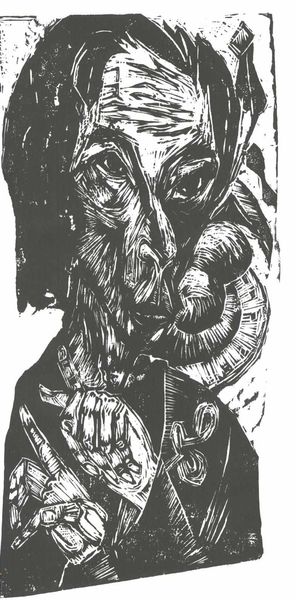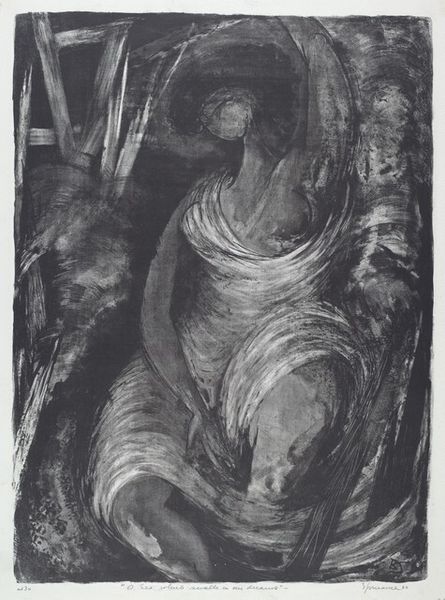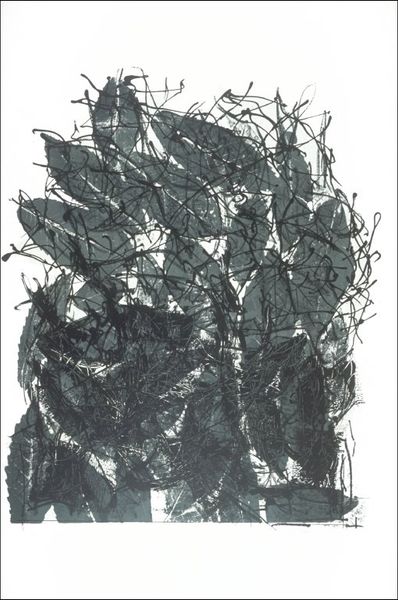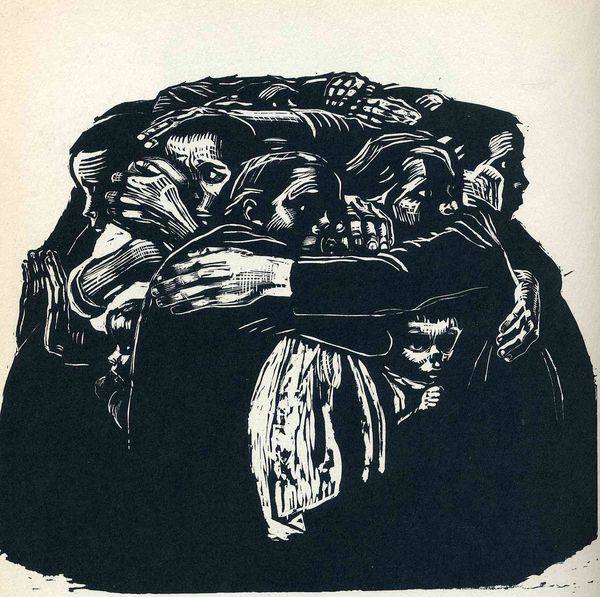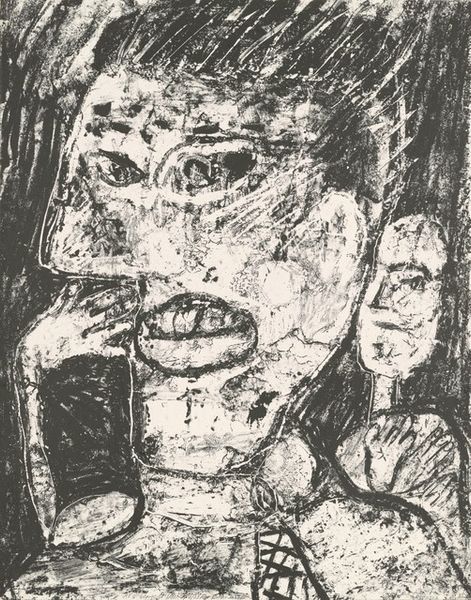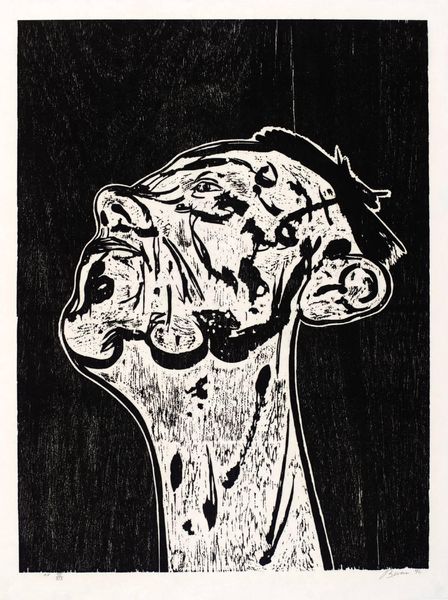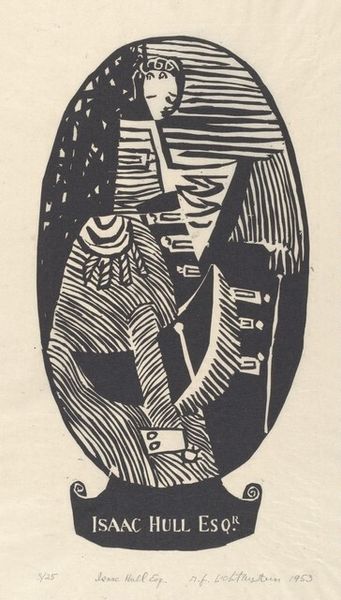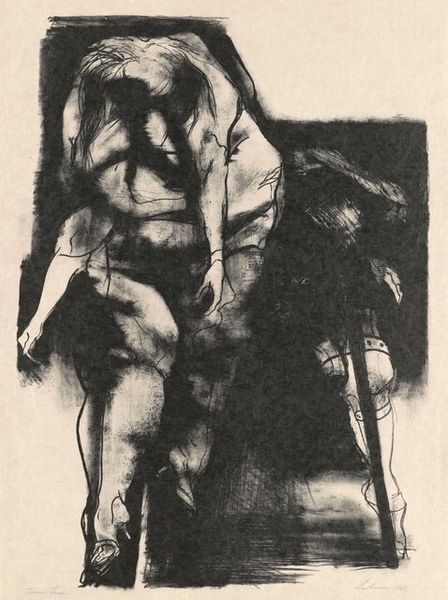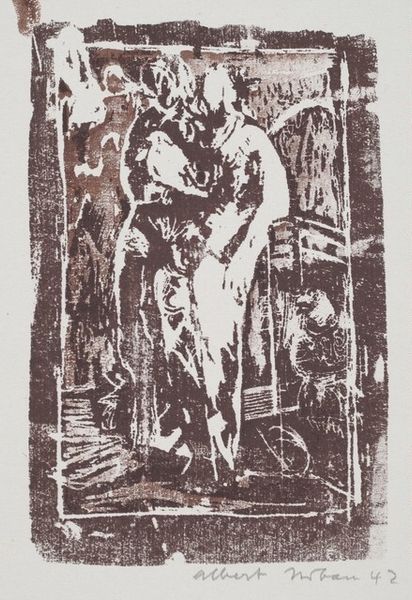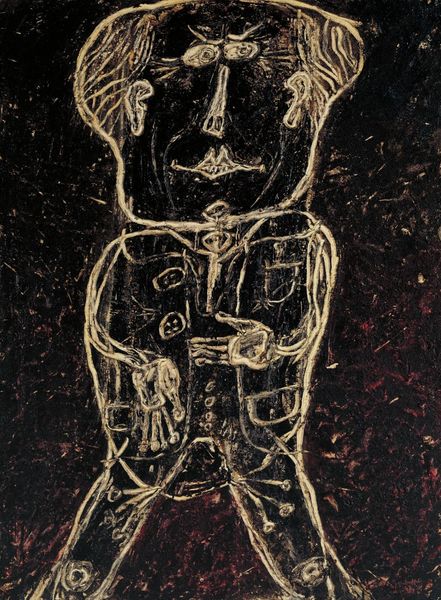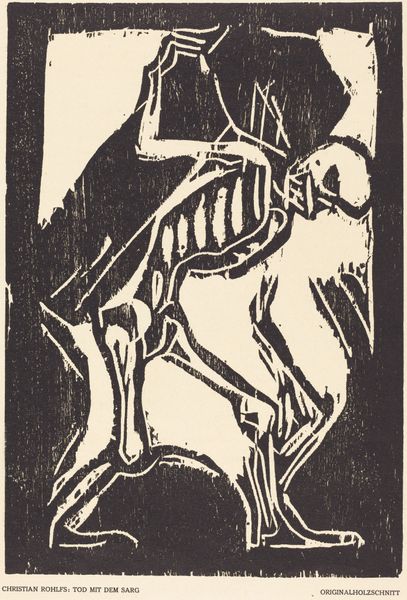
print, ink, woodcut
#
portrait
#
self-portrait
# print
#
german-expressionism
#
ink
#
expressionism
#
woodcut
#
monochrome
Dimensions: 58.8 x 43.4 cm
Copyright: Public domain
Editor: Ernst Ludwig Kirchner's "Head of a Sick Man: Self-Portrait," made in 1918, uses ink and woodcut techniques. It has this stark, almost painful, visual quality. What do you see in this piece beyond the immediate impression? Curator: I see the brutal honesty of Expressionism laid bare. Kirchner made this print during a period of immense social upheaval following World War I, when the rhetoric of the war caused society to splinter. The deep carving in the woodcut mirrors the harshness of that post-war reality, and perhaps, also Kirchner's personal state after his service in the military, the breakdown, and time in sanatoriums. The distorted features really highlight his feelings of alienation. Do you see the almost weapon-like quality of the objects around him? Editor: I do, now that you point it out! What are those objects, exactly? And what's the significance? Curator: Precisely! The tools near his face could represent the implements of his art, now turned into instruments of self-inflicted harm or anxiety, reflecting a world in which the artist feels his own skills are also forms of aggression. The context of post-war Germany is essential. Male artists such as Kirchner volunteered to support their nation, and the fact he later claimed to feign mental illness reflects on societal structures of militarism. What does it mean to critique a war that damaged so many through images of distorted introspection? What is being valorised in Kirchner, and what is lost? Editor: So it’s a physical and psychological portrait of the artist himself, but it's also indicative of Germany as a nation at this historical turning point. This makes it far more than just a self-portrait of an ill man. Curator: Exactly! It encourages us to see individual pain intertwined with broader political and social realities. Considering it in terms of today's discourse about gender roles and power allows the piece to further resonate through its raw emotional charge and its commentary about social pressures on men and its impacts on mental health. Editor: That gives me so much to think about! Thank you for broadening my understanding of Kirchner and his work!
Comments
No comments
Be the first to comment and join the conversation on the ultimate creative platform.
